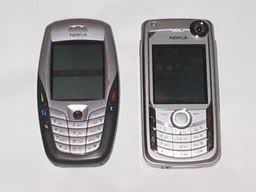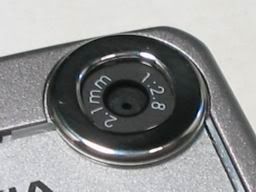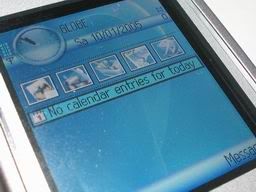Out with the old, in with the new....
A couple of weeks ago, I finally took the plunge and bought a new handset to replace my reliable and trusty two-year old Nokia 6600 as my main phone. After reading a lot of reviews and comparing various brands and models, I finally settled on a Nokia 6680 dual mode smartphone.
Like the Nokia 6600, it's still a tri-band GSM handset based on the Symbian Series 60 platform, but it has two years worth of technical advances on the older phone. These include full 3G (UMTS) and EDGE network capabilities, a 1.3 megapixel primary camera (with 6x digital zoon, a lens protector and an LED flash), a front mounted secondary VGA (0.3 megapixel) camera for video calls and self portraits, Push-to-Talk (PoC) technology, a faster processor (a Texas Instruments OMAP1710 running at 220 MHz, versus the Nokia 6600's 104MHz ARM processor), more internal memory (10 MB versus 6 MB for the Nokia 6600), a clearer, 262K color display, better sound via an improved onboard speaker, built-in MP3 player, expandable memory using dual-voltage RS-MMCs, a Pop-Port interface, and an improved standby screen, among others.
There are a few complaints though. It's a bit heavier than the Nokia 6600, it doesn't have an infrared port, there's no FM radio, the ABC/alternator button is positioned too low on the right, and all the metal highlights make it somewhat vulnerable to scratches. Most importantly, local cellular carriers don't support the 3G standard just yet, so I still have to wait a while before I can make a video call or browse the internet through the mobile network at broadband speeds.
All those minor issues aside, the Nokia 6680 appears to be a very capable handset. I think I'll enjoy using it for the next couple of years. Here are a few pictures:

Nokia 6680.
A Nokia 6600 and a 6680 side by side.
Rear mounted 1.3 megapixel camera and LED flash.
Front mounted VGA camera.
Conventional keypad layout with larger soft keys and a 5-way navipad.
Improved standby screen, with shortcuts and daily calendar.
Comments